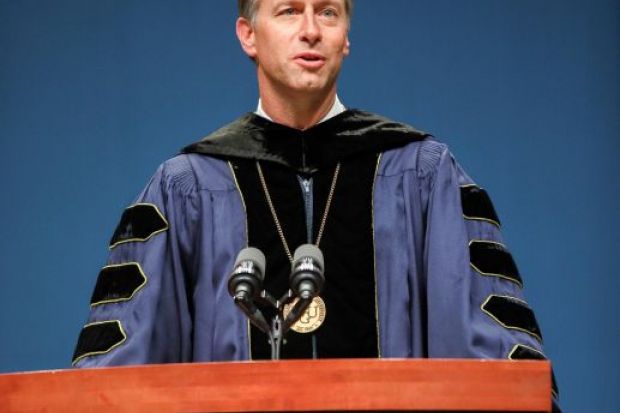Struggling US colleges should use the coronavirus pandemic as an opportunity not just to improve remote teaching but also to fully embrace teaching outside the traditional student age range, an online pioneer has said.
The US is among many Western nations already facing a population decline in the 18-to-24 age range, while the coronavirus-driven economic crisis is accelerating demands for mid-career job retraining.
Colleges should take far more seriously the idea that the latter problem is a solution for the former, said Scott Pulsipher, the president of Western Governors University (WGU), an online university headquartered in Utah.
Instead, Mr Pulsipher said, most colleges have spent the summer signalling that online teaching is a handicap to be avoided. That has left the institutions behaving as “the epitome of a correspondence school”, he said, only grudgingly shifting their in-classroom material to the internet, while providing little of the student-specific attention, feedback and pacing that a virtual format enables and that older students, especially, need.
The shrinking traditional college-age population has, of course, been evident for a couple of decades. And US higher education leaders have at times acknowledged the need to adjust to a student body full of parents with jobs, returning dropouts and laid-off workers making mid-career transitions.
But their fierce resistance to shutting their campuses during the pandemic, Mr Pulsipher said, reveals the depth of their failure to recast their operations in a more student-centred and career-oriented direction.
“This is a long-term shift anyway,” Mr Pulsipher said of the need to accommodate the ageing US population. “This is not a short-term thing that they just do for some temporary period, and then everyone comes back on the campus.”
Western Governors University was an early pioneer in online education, founded in 1997 by 19 western US states, before for-profit colleges came to characterise the sector. WGU operates on a competency-based model, allowing students to quickly earn credit for their existing knowledge and skills.
Mr Pulsipher came to WGU in 2016 with a master of business administration degree from Harvard University, experience as a Mormon missionary in Poland and a long corporate sector history that includes a role as general manager in internet services at Amazon.
At WGU, he has become a leading advocate for the idea, promoted by the Trump administration and many congressional Republicans, that post-secondary education should be far more focused on job-relevant skills.
Mr Pulsipher attributes that belief to data showing that traditional four-year colleges graduate only about 60 per cent of their students.
WGU graduates only about 45 per cent of its students, but Mr Pulsipher credits WGU with improving that figure over the years, while doing a far better job helping workers obtain non-degree credentials measuring specific skills useful for particular jobs.
That does not mean that he rejects the value of four-year residential institutions providing broad liberal arts training. His own children attend them, and he regards the experience of maturing “in the bubble of the campus life” as a “really nice thing” for many students.
But for the 40 per cent of traditional-age students attending a four-year college and not likely to graduate, they could be better served by post-secondary alternatives, Mr Pulsipher said.
“The prospects for a progressive life − meaning one where you have your great first opportunity and you keep going from there − is dramatically higher when you can acquire a post-secondary credential that’s relevant to the workforce,” he said.
In that sense, Mr Pulsipher said, “the residential expectations actually constrain access”.
Register to continue
Why register?
- Registration is free and only takes a moment
- Once registered, you can read 3 articles a month
- Sign up for our newsletter
Subscribe
Or subscribe for unlimited access to:
- Unlimited access to news, views, insights & reviews
- Digital editions
- Digital access to THE’s university and college rankings analysis
Already registered or a current subscriber? Login







